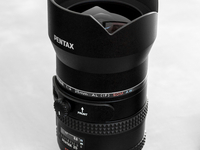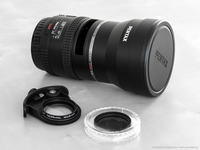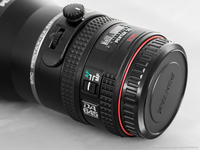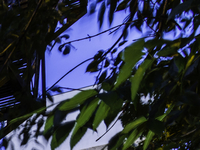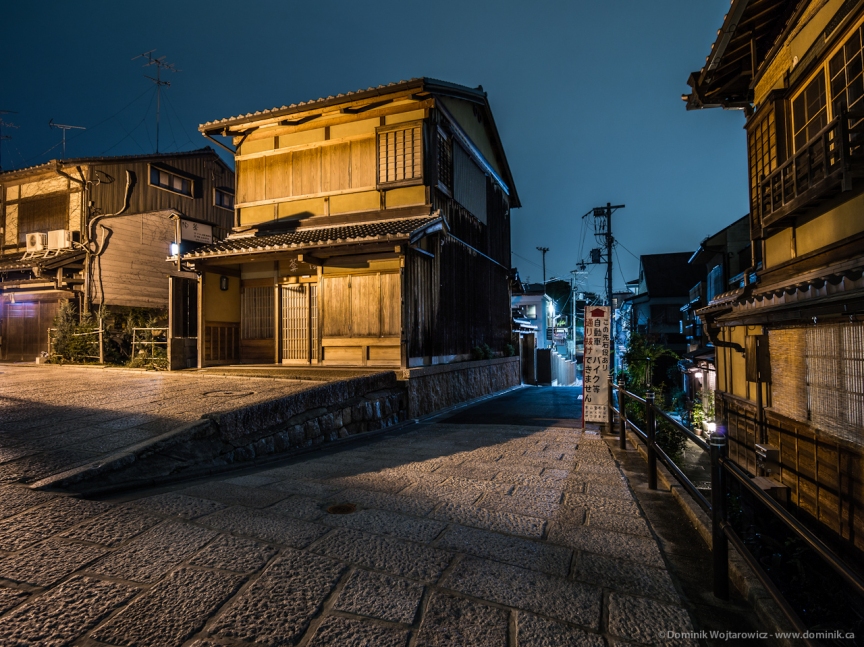SMC Pentax-DA 645 25mm F4 AL [IF] SDM AW Rolling review
The SMC Pentax-DA 645 25mm F4 AL [IF] SDM AW is the widest FOV available lens for the 645D system and Pentax’s most expensive new generation lens costing almost $ 6000 with tax.
Giving a 95 degree angle of view and consisting of 12 elements in 8 groups, it’s a lot of glass weighing in at 1040g (36.7 oz).
First impressions
I’m writing this on a flight to Tokyo and my first impressions are based on the limited time I have had with the lens over the couple of days before leaving. The bulk of my observations will be done on images I shoot with it in Japan, so stay tuned.
From the very first moment the build quality of the lens is very apparent. The weight, solid metal construction and finish is a big step up from many other lenses available on the market, especially those with autofocus. This is expected given the price tag but not always the case in today’s market.
The lens features a manual/auto focus switch as well as the ability to adjust the focus manually after the camera has performed an auto focus. This adjustment works without having to switch to full manual mode on the lens and it’s very convenient in practice.
Focusing
The first thing that I notice compared to the standard 645D 55mm lens is the auto focus speed; it’s slower, not by a great deal but enough to notice. I’m not sure if this is because of the focal length or some other factors.
So far the autofocus has been accurate, but this is the type of lens where live view would really help with focus. Out of all the lenses I own for any system, this one is probably the hardest one to really confirm focus on. You either have to trust the auto focus or have enough high contrast elements in your scene to be able to tell if the objects you want in focus really are. This issue arises from the very deep depth of field of the lens where almost everything looks in focus though the viewfinder. Adding to my initial frustration is the fact that areas of pin point focus are extremely sharp so anything that is a miss quickly stands out.
While some of the other Pentax lenses such as the 55mm and 120mm macro are very sharp, this one is the first one that seems to out resolve the sensor and contribute a little more to moiré in areas where I usually have not encountered it with my other lenses. I suspect that any future higher resolution pentax sensors will make this lens shine even more.
*All images in this post are in ProPhoto RGB so please make sure your web browser is colour profile aware.
Toronto graffiti.
Filters
Filters on this lens are inline, basically part of the optical system. A polarizer as well as a standard filter are included with the package. The small piece of paper that comes with basic instructions does not state if the standard filter can be removed without anything taking it’s place or if it should be left in. This is something I will have to find out directly from Pentax as I was not able to observe any visually noticeable differences with it in or out.
The convenience of an inline filter is great but my only fear is getting dust or dirt into the filter compartment where it will be hard to clean due to limited space and access. Besides this potential issue, I think the internal filter system is great and a lot more convenient than the typical approach of fiddling with a polarizer in front of the lens with the lens hood in the way. It’s clear that Pentax engineers are photographers themselves because the polarizer access issue has been thought about even on the 55mm 2.8 lens with it’s little sliding door on the hood of the lens that allows for easy access.
This lens has no filter thread. The lack of a front filter thread can become a potential issue for many landscape shooters who regularly use graduated ND filters in front of their lens. The inability to easily mount a filter system in front is rather annoying but with the hood of the lens not being removable it does pose a challenge. I’m not sure why Pentax has chosen to design this lens with the hood as part of the form factor, but there are slip on filter holders one can get that will allow for mounting a Lee or Cokin system. There are also slip on hacks that some users have made at home that seem to do the job.
Tokyo alley, mixed lighting.
Tokyo street, handheld sample.
Wooden home, Kyoto.
Initial inconsistencies/Annoyances
I have to do a lot more shooting, but my impression is that this lens seems to have a more visible field curvature than what I’m used to with other lenses or it could be a false observation based on poor subject matter.
This effect is more obviously noticeable on things such as flat walls and seems to change a little based on the focus distance. This is something I intend to confirm with Pentax and perhaps do more controlled testing.
Another issue is the fact that this lens does not report anything besides “25mm” in Lightroom’s image info and it gets put into the unknown metadata category. Even the older lenses and the new 55mm report their full name but not the 25mm. At the moment two of my manual focus lenses (the 300mm and 120mm macro) and the 25mm get put into the same category. I’m not sure if this is something that can be fixed via a firmware update to the camera, but for Pentax to miss something like this is more than mildly annoying. It’s already becoming an issue as I’m trying to fish out images shot with the 25mm for this post.
More updates to this post coming soon.



